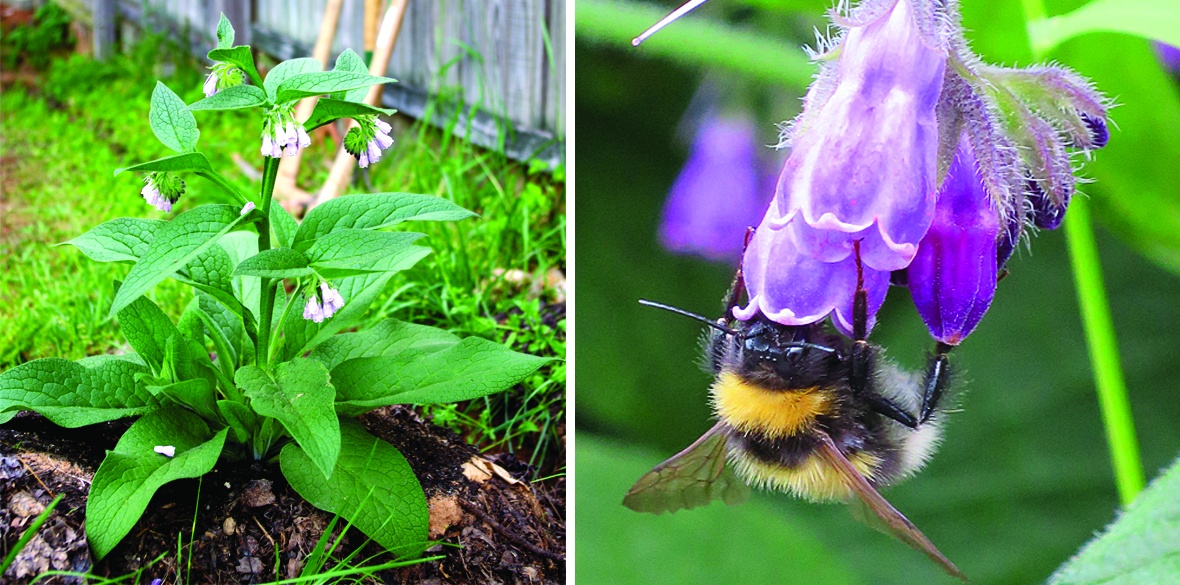This is the last article you can read this month
You can read more article this month
You can read more articles this month
Sorry your limit is up for this month
Reset on:
Please help support the Morning Star by subscribing here
I DON’T think you can get a better bumblebee plant for the garden than Russian comfrey (Symphytum × uplandicum). Bumbles of various species work its plentiful, pendulous, blue-purple flowers all day long, from early spring until autumn.
Of course, the usual reason for growing comfrey is that the leaves are used to make a valuable fertiliser, green manure, or mulch. They are a rich source of nitrogen, phosphorous and especially potassium, and particularly useful when applied to tomatoes and potatoes.
If you know someone who’s already got a mature comfrey patch it’s very easy to take cuttings. Using a spade, slice down through the centre of a plant, splitting it in two. Dig out one half, and that’s your new plant.
Fill in the hole left around the original plant with soil, water it well, and it’ll recover within a few months. Remove the leaves from your cutting, and plant it a couple of inches deep.
Otherwise, you can buy plants or roots for less than a tenner online. The comfrey you’re looking for is called Bocking 14 – it’s a sterile hybrid, first developed in this country in the 1950s by gardening writer Lawrence Hills, who founded what is now called Garden Organic, which went on to become the world’s largest organic gardening organisation.
Because Bocking 14 doesn’t set seed, it won’t spread and become a nuisance, as common comfrey can. It’s also particularly high in readily available nutrients. Be warned that comfrey can be difficult to get rid of once established, so choose its site with care. It’s a long-lived perennial, often productive for 20 years or more.
It does best in full sun and in rich soil, but will normally grow reasonably well in partial shade and poorer soils and can therefore take advantage of spots in the garden that won’t produce much else.
Most often planted in spring or early autumn, comfrey can be started successfully at any time of year except winter. June’s a good choice, because the ground should have warmed up by now, but not yet be dried out.
Having chosen a place for your comfrey bed, fork it over to thoroughly remove weeds, especially the roots and runners of perennial weeds. Although a mature comfrey plant will smother them, a new one doesn’t react well to competition in its first year. Then dig in plenty of manure or garden compost.
In a sunny, rich position you should allow about 3 ft (1 metre) between each plant. In a shadier or less fertile spot, you might reduce this to 2 ft (60cm). To allow the new comfrey to settle in, don’t harvest any foliage from it during the first 12 months and remove any flowers that appear.
In fact, many gardeners never allow comfrey to flower, so as to put all its energy into leaf production. But I find that I can get three or four huge crops of leaves a year while still enjoying the flowers, along with the bumblebees.










